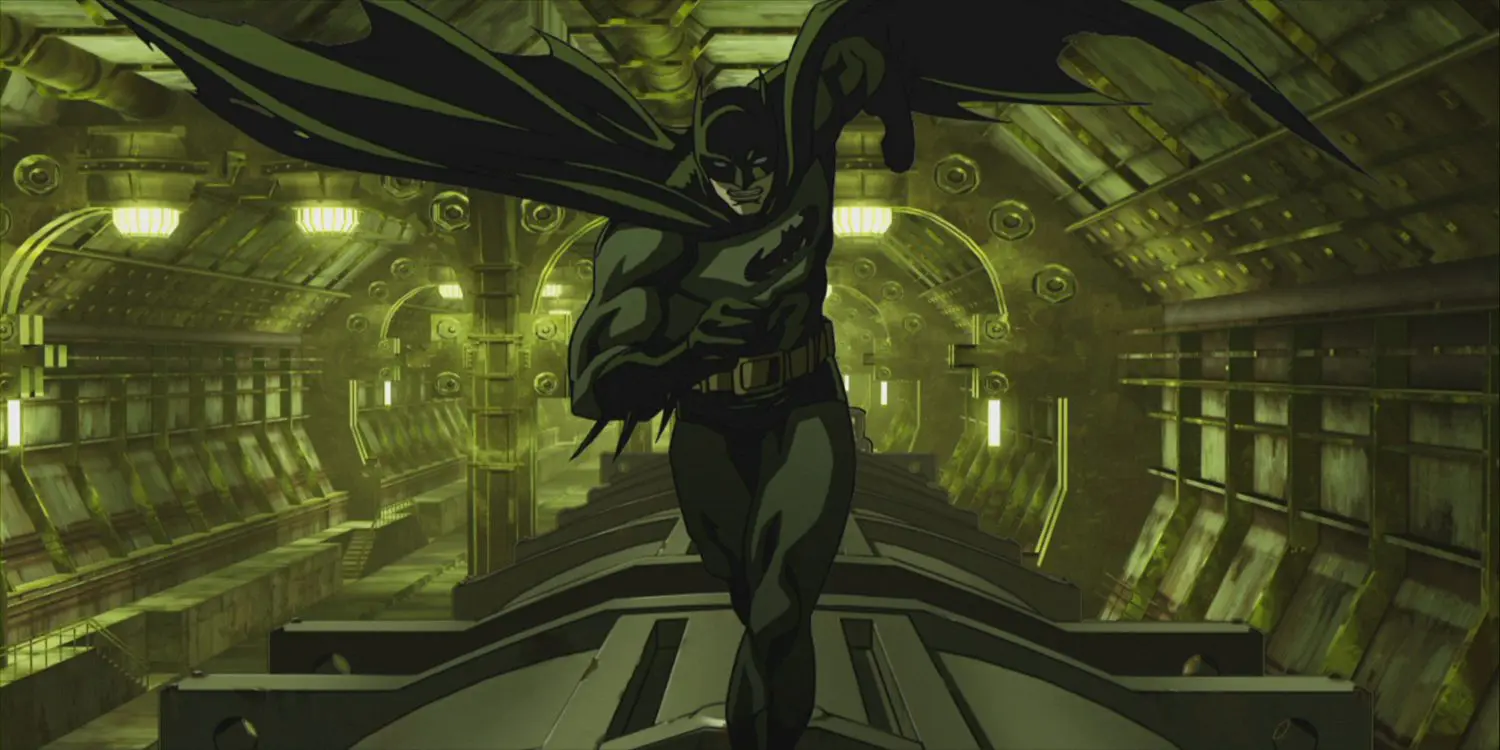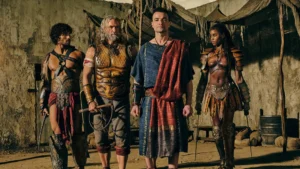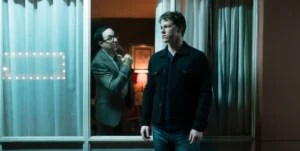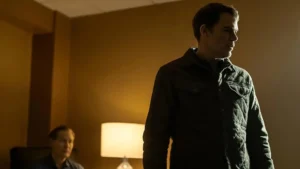Summary
An inconsistent and largely inconsequential anthology of Batman stories, Gotham Knight offers very little for long-time fans and fails to put its association with Nolan’s trilogy to good use.
Batman: Gotham Knight is a DC Universe Animated Original Movie. Check out the full archive by clicking these words.
Here’s what Batman: Gotham Knight is supposed to be: An anthology-style collection of Batman stories that bridge the gap between Batman Begins and The Dark Knight. Another thing: A cross-cultural collaboration between renowned western writers and powerhouse Japanese anime studios. Another: Good.
Here’s what Batman: Gotham Knight actually is: An anthology-style collection of Batman stories that have barely anything to do with Christopher Nolan’s trilogy, aren’t officially considered canon and in fact occasionally contradict those movies in terms of style and tone. Also: A frequently mismatched and misguided combination of writing and animation that often undermine each other and/or the character as a whole. And also: Not very good, for the most part.
Perhaps that isn’t entirely fair. Two of the six stories are a great time, and a third is… strange, but ultimately inoffensive and potentially interesting, depending on where you’re standing. But that leaves 50% of the movie that is aimless, boring and sometimes flat-out bad, and the good stuff isn’t quite good enough to make up for it.
The opening tale, “Have I Got A Story For You”, is maybe the most egregious fusion of everything about Gotham Knight that doesn’t work. Written by Josh Olson (Academy Award-nominated for A History of Violence, let’s not forget), it features a group of punk teenagers lounging around and sharing their own versions of an encounter with Batman. Each character has a radically different perception of what the hero looks like and what he’s able to do, which leads to some varied and creative visual interpretations. It’s not a bad (or original) idea for a Batman story, but the dialogue is a 40-odd-year-old guy’s idea of hip street lingo, which is, as always, fucking unbearable, and the animation style is a stretched-out, smoky mess that’s about as pleasing to the eye as the writing is to the ears. Which is to say not at all.
This introductory story also kick-starts the trend of each chapter largely feeling rather pointless, contributing nothing of significance to Batman’s character or lore, or even this particular anthology. The second story, “Crossfire”, fares slightly better, mostly because it deals with the pre-existing conflict within the Gotham mob, and papers over some cracks left by the release of Arkham’s inmates at the end of Batman Begins. Acclaimed comic-book writer Greg Rucka centers the story on two GCPD detectives who are trying to reconcile their need for Batman’s protection with their unease about his vigilantism. Again, it’s not a bad idea, and it’s nice that the segment has some kind of relationship to the world established in Nolan’s movies, but the piece devolves into a lifeless, absurd action sequence that betrays the tone of that world and doesn’t leave any space for us to care about the two potentially-interesting characters.
Jordan Goldberg, the producer of Nolan’s Batman trilogy, contributed the third story, “Field Test”. I can barely remember anything about it. Not that it’s particularly bad, per se, it’s just not that interesting. Like “Crossfire” it plays up tensions within organized crime, but it’s really a story about Batman getting his little Bat-panties in a bunch about a new device that deflects small-arms fire.
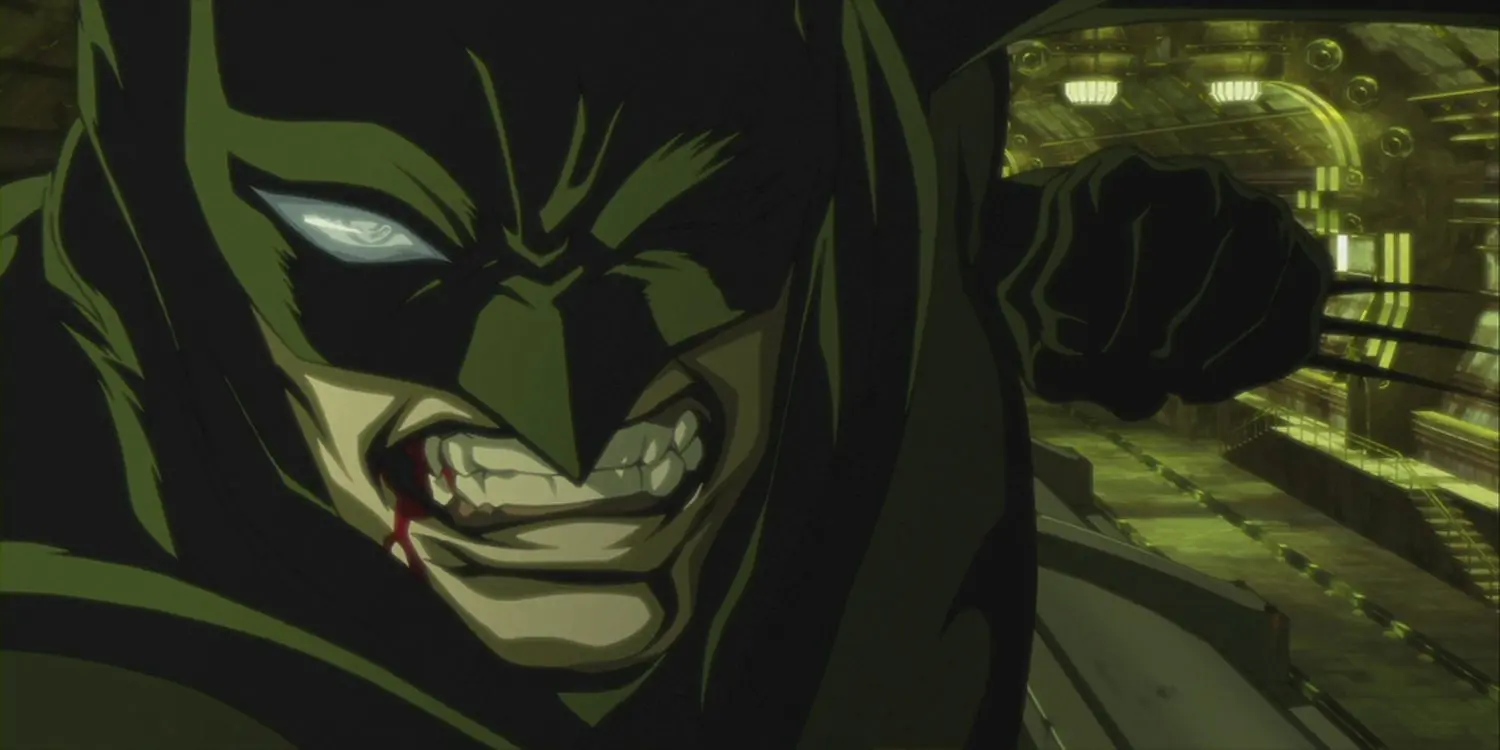
“In Darkness Dwells” is much better, and is easily a stand-out story in the anthology, focusing on Killer Croc and Scarecrow while still maintaining a connection (and tonal consistency) with Nolan’s films. It’s no surprise, really. The segment was written by David S. Goyer, who co-wrote the screenplays for Batman Begins, The Dark Knight, and The Dark Knight Rises, and he manages to create a grounded interpretation of what is, at its heart, quite a fundamentally ludicrous story. The sewers are visually-interesting, and the music in this segment is also excellent, meaning it’s just about the only portion of the film that doesn’t give me anything to complain about.
Thank God for Brian Azzarello’s “Working Through Pain” then, an extensive flashback sequence in which an Indian woman, Cassandra, helps Bruce Wayne develop resistance to physical and emotional pain. It’s a snappily-written sequence, but it’s undermined (intensely) by a bizarrely young and soft-looking Bruce. It’s also quite a staid reiteration of how Batman is so impossibly traumatized and wounded that he’s beyond any kind of support, even from an exotic pain-specialist, and that kind of creatively-barren territory just brought the story down for me. Still, though. If there’s a segment I didn’t like that I suspect other people would, this is it.
The (almost) best was saved for last. Four-time Emmy-winning writer Alan Burnett’s “Deadshot” feels like the kind of story a Batman anthology was designed for: Straightforward, action-heavy and entertaining, with a recognizable (and not inherently ridiculous) villain. It’s easily the most suspenseful of Gotham Knight’s six chapters, and if it hadn’t been for “In Darkness Dwells” managing to locate something truthful and interesting about Batman himself, it would have been the best of the bunch. “Deadshot” doesn’t have the same kind of introspection, but it works, completely, as pure superhero entertainment.
And yet despite parts of it working very well, Gotham Knight still feels like a failure, or at the very least a disappointment. The unique anime-style might well position this thing as a necessary curio in Batman’s diverse multimedia offerings, but in terms of its stories, it simply isn’t that interesting. And that feels like a major missed opportunity given the wealth of talent behind the project.
Gotham Knight? More like Gotham Shite, right guys?
Don’t worry, I’m leaving.

